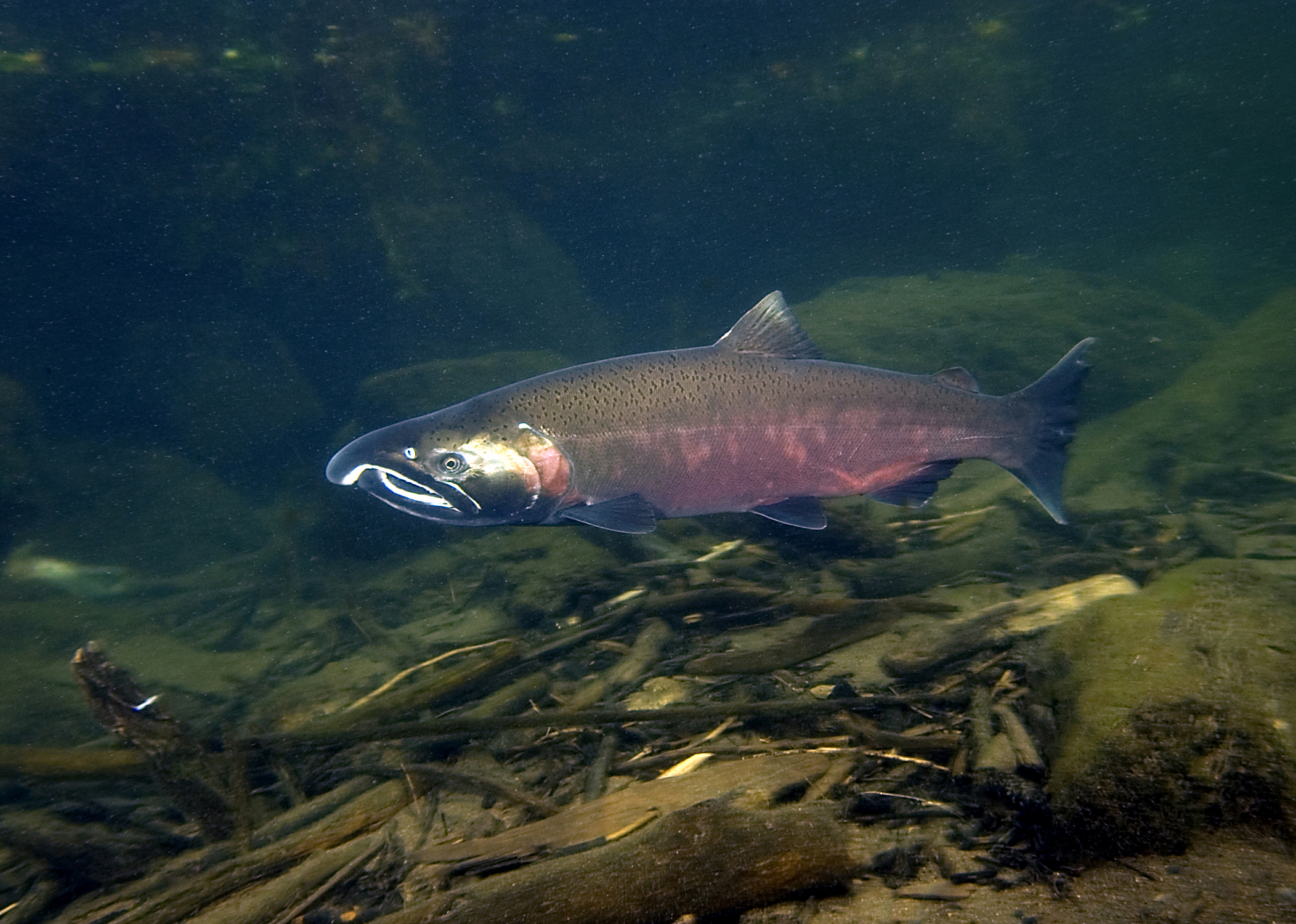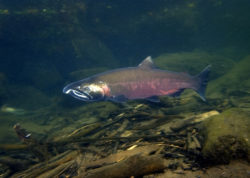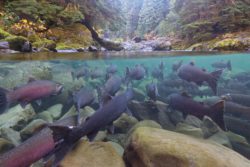
Sea Wonder: Coho Salmon

Photo Credit: Oregon Department of Fish & Widlife
Appearance
Coho salmon (Oncorhynchus kisutch) can reach lengths of nearly two feet and weigh an average of eight pounds but as much as 35 pounds in some cases. Often called silver salmon, they are characterized by dark blue or greenish backs, silver sides, and white bellies. Their scale patterns can change depending on whether they are in a freshwater or marine environment. For example, in freshwater, spawning coho salmon are dark with reddish coloration on the side but in the ocean they gain a darker back and lighter belly with small black spots on their back and upper tail.
Diet and Habitat
Coho salmon spend part of their lives in freshwater streams and estuaries and part of their lives in the northern Pacific ocean from Alaska and as far south as Mexico, and near Russia and Japan. In the United States, they are most commonly found in coastal areas between Alaska and Oregon, including near Olympic Coast National Marine Sanctuary in Washington State. In Washington State, coho salmon are one of the top four recreationally fished species and commercially harvested fish in the state.
In freshwater, coho salmon eat insects at the water’s surface and aquatic invertebrates, and in the marine environment their diet primarily consists of smaller fish and sometimes squid.
Life History

Photo Credit: Adam Baus
Salmon are anadromous fish, which means they hatch and spend their first year in freshwater but migrate out to saltwater and the open ocean to feed and grow into adulthood. They then return back to freshwater to spawn, usually between mid-October and January for populations near the Pacific northwest. When spawning is complete, adults die and their carcasses become valuable sources of energy nutrients in the freshwater ecosystem. Their carcasses have been shown to be a good source of nitrogen and phosphorous which improve newly hatched salmon growth and survival.
